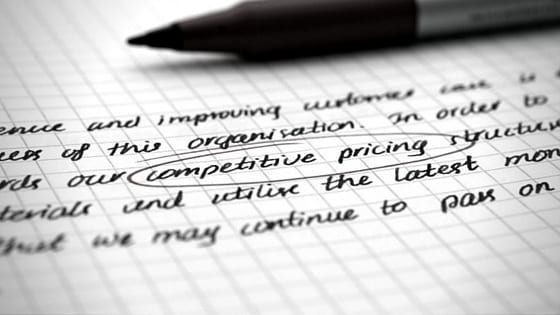Predicting the financial future of a business isn’t an easy task. But if you own or want to start your own business, budgeting is its central nervous system.

In fact, budgeting and forecasting are critical to the success of any small business. Around 51% of Australian small businesses fail due to poor strategic management and inability to get finances into shape. Fortunately, effective budgeting can allow owners to plan and prepare for financial goals and obtain a healthier financial future.
Here’s how you can improve processes to create a strategic plan and budget better for 2019.
Budget vs. Forecasting
To drive business success and manage finances, you must use two processes – budgeting and forecasting. While similar, there are essential differences to understand.
Budget planning: A financial guide or planner that documents an overall plan to be executed, with an estimation of costs, resources and revenues. Budget plans should show expenditures from month to month and cover three to five years.
Budget forecasting: Compares budget data from previous business years to predict future financial outcomes and insights.
Budget for Your Business
Create a budget to direct your money to where it’s needed most.
This can be adapted to reflect the individual needs and goals of your business. However, it must include:
- Fixed costs such as rent and insurance
- Variable costs such as cost of branding materials, utilities and staff wages
- Business income expected over the budget period. Be realistic and conservative to allow for breathing room and potential risks
- Actuals; the difference between actual income and expenses compared to budgeted income and expenses
A budget isn’t a set and forget plan. It must be analysed along the way to track seasonal patterns and outlays to find ways to cut down costs. This will help decide if changes are warranted, such as potentially raising product/service prices.
If you’re starting out, include start-ups costs in this business template. A cash flow statement and profit/loss balance sheet will also be valuable for new and ongoing businesses.
Focus on Performance Measures vs. Budget Targets
Although budget targets are important, many businesses obsess over them.
A balanced set of performance measures can be more effective to focus on. These Key Performance Indicators (KPIs) are critical for evaluating your business to progress towards strategic and financial goals. When the focus is only on budget targets, future planning and control is limited. Best practice businesses will focus on budget targets secondary to performance measures.
Analyse Past Performances
To achieve budget forecasting, past results need to be analysed.
Once your budget is in place, allow for forecasting that looks at the many potential scenarios that can occur. This includes what your competition is doing, market trends, seasonal changes and client behaviours. Resources (both internal and external outsources) should also be accounted for when forecasting to identify any major changes.
When analysing past performances for better forecasting consider:
- Updating budget plans quarterly to measure what’s happening with your business on a weekly basis to ensure you’re achieving the results you need
- Previous budgeting cycles. Take the time to carefully plan and document your costing architecture to easily compare results each year
- Tracking even the most minor details as their potential impact on your business’ financial health may be substantial
- Allocating resources and proper procedures to your budgeting and forecasting for a clear corporate strategy
Pick the Right Budgeting and Forecasting Platform
Business owners need the right tools to manage financial future.
To budget and forecast efficiently, you must invest in the right financing platforms. Many owners run into time issues when budgeting because they haven’t got the best tools for the job. Be smart with your time and resources. Find a software tool that works for your business and makes budgeting and forecasting more accurate.
Having a centralised tool that key staff are trained to use is critical to a healthy financial future.
Estimate Direct and Indirect Costs
When estimating direct and indirect costs for your budget you’ll need to document all expenses including sales, operational costs, cash flow and Cost of Goods Sold (COGS).
This also includes general and administrative expenses, stock, materials, travel, commissions, monthly or annual fees and office/business supplies.
Tip: Check with your suppliers for a ballpark cost for the next year. Make sure you tell them you won’t be holding them to these costs, you simply need an estimate to budget accordingly.
Account for Uncertainty
Budgets are living, breathing documents and need room to move.
Whilst details are paramount, a good budget plan will account for uncertainty and allow for some wriggle-room. Flexibility in budgeting and forecasting creates a buffer for unforeseen obstacles. However, don’t set these buffers at the same level each year – they need to adapt to your business and risk management plans.
Businesses that ignore the future and invest more time in detailing a budget based only on the past won’t be prepared for any unforeseen scenarios.
Get Professional Advice for Strategic Business Development
There’s a lot of complexity, research and work involved in budgeting and forecasting processes. To ensure accurate cash flow forecasts and assist with defining business goals and planning for the future, consider getting professional financial advice.
Once you’ve set up your financial strategy, regular reviews can keep you and your business in check. You’ll gain better control of your finances and nurture strategic business development.



















